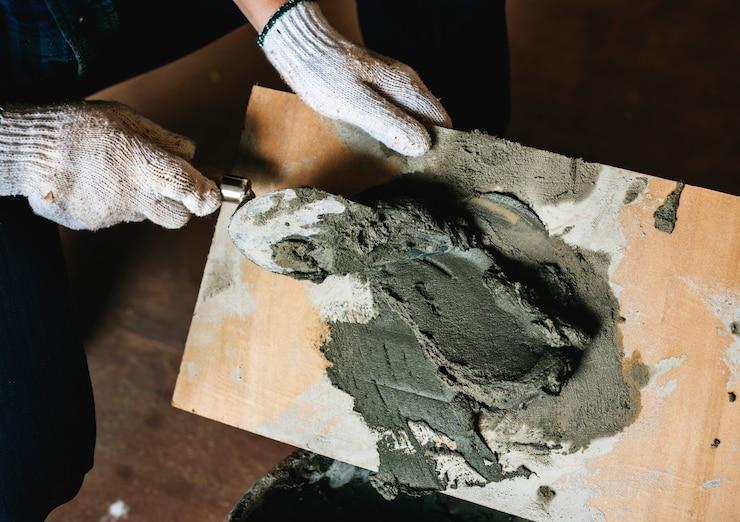The construction industry needs cement to reinforce both big skyscrapers and cozy houses. Technological progress helps engineers come up with improved cement that boosts the efficiency of the regular cement. Among these, GP2 cement stands out as a high-quality grout that shrinks very little and many people in the industry recognize it for this. This blog looks into the ways GP2 cement is used, its features, and the reasons it is a convenient and smart pick for new construction projects.
Overview of GP2 Cement
GP2 cement, known also as General Purpose Non-Shrink Grout, is created for great strength, durability, and almost no shrinkage. It is supplied in a ready-to-use liquid, which is composed of Portland cement, special fillers, and mix-in chemicals.
This combination ensures:
- Controlled expansion during the plastic state
- Uniform mixing with minimal water demand
- Quick achievement of early strength
- Excellent bonding and structural integrity
Its free-flowing nature and non-shrink characteristics make GP2 cement ideal for use in load-bearing and high-performance environments, delivering consistent and reliable results.
Key Features of GP2 Cement
Here are the standout features that make GP2 cement so effective in the field:
- High Compressive and Flexural Strength: Offers superior support and longevity.
- Non-Shrink Formulation: Ensures full contact with load-bearing surfaces without gaps or shrinkage.
- Low Water Demand: Reduces the risk of cracking while speeding up strength gain.
- Uniform Mixing: Thanks to its graded fillers, the cement mixes evenly every time.
- Durability Against Elements: Resistant to water, chemicals, and extreme weather conditions.
- Prepackaged for Consistency: Minimizes the chances of on-site batching errors.
- Non-Metallic Composition: Prevents discolouration and eliminates corrosion risks.
Common Uses of GP2 Cement

GP2 cement is both strong and very versatile. A few of its most frequently used applications are described below.
- Wind Turbine Foundations: Stabilizes the turbine against the forceful vibrations and strong winds.
- Bridge Bearings: Ensures even load transfer across critical structural components.
- Machine Base Plates: Ideal for anchoring heavy machinery in industrial settings.
- Rail Track Support: Offers vibration resistance and enhances track stability.
- Crane & Hoist Foundations: Delivers reliable support for large-scale lifting equipment.
- Precast Concrete Jointing: Gaps between slabs and other parts of the structure are secured with precast concrete jointing.
- Structural Repairs: Restores strength and integrity to damaged concrete surfaces.
- Masonry Reinforcement: Enhances load-bearing capacity when used with columns and reinforcement bars.
How to Use GP2 Cement in Construction
Using GP2 cement effectively involves careful preparation and application. Follow these steps for best results:
1. Surface Preparation
Remove all the dust, oil, grease, and dirt from the surface. A substrate that is well cleaned ensures both good adhesion and good results.
2. Mixing and Placement
Use the water and powder ratio that is listed on the packaging. Keep stirring until the mixture is smooth and place it in the cavity or formwork so that it reaches every side.
3. Curing
Protect the freshly applied grout from direct sun, wind, and rain during the initial curing period. Allow ample time for setting before applying any load.
Note:
- In low temperatures, setting may slow down; longer curing may be needed.
- In high temperatures, setting quickens; use chilled water to extend workability.
Advantages of Using GP2 Cement
GP2 cement offers several benefits that make it a superior alternative to traditional grouting materials:
- Gaseous Expansion System: Compensates for shrinkage by expanding slightly during setting, reducing the risk of micro-voids.
- High Early Strength: Gets to the required level of strength in a shorter time, shrinking the construction period.
- Excellent Flow Properties: When the adhesive has exceptional flow properties, it spreads well on the load-bearing areas for better structural strength.
- No Chlorides or Metallic Iron: Prevents long-term corrosion and staining.
- Reliable Long-Term Performance: These construction materials perform well and last long in difficult places.
- Consistent Quality: Being pre-packaged, the material eliminates on-site inconsistencies.
Conclusion
The use of GP2 cement is transforming the way today’s construction projects complete grouting and reinforce their structures. Due to being non-shrink, very strong, and very tough, it satisfies the needs of modern construction.
If you want to be sure your wind turbine or heavy machinery is safely held in place for a long time, Walls & Dreams advises using GP2 cement. Because it is already mixed and can be used in many ways, professionals pick it for trying to finish projects as efficiently and closely to specification as possible.
FAQs
1. Can GP2 Cement be used underwater?
Not specifically designed for underwater use, but it can be used in moist conditions with proper preparation. Always consult with the manufacturer for underwater applications.
2. Is it suitable for dynamic load conditions?
Yes. GP2 cement is engineered to withstand both static and dynamic loads, making it ideal for use under machinery, rail tracks, and cranes.
3. For how long can GP2 Cement be stored after manufacture?
GP2 cement stored correctly in a nice, dry place will last for 12 months after it has been made.








